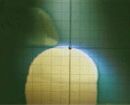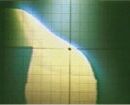Plasma Arc Melting - Methods
Refractory compounds (carbides and borides of transition metals of groups IV-VI) exhibit remarkable physical, chemical and mechanical properties. They are characterized by high meting points, corrosion resistance, hardness, plasticity at high temperatures, stability of their electro-physical and physico-mechanical properties within in a wide temperature range, and low electron work function. They are expected to retain their unique characteristics when in a single crystal state. Therefore it is necessary to synthesize large single crystals with a perfect structure and a low impurity content for a comprehensive study of the whole range of their properties.
The Plasma Arc Melting (PAM) is a promising method for production of the largest single crystals of transition metal carbides and borides. Self-propagating high-temperature synthesis (SHS) may offer new possibilities for production of the high-quality raw rods with the appropriate size, density, and impurity content for Plasma Melting.
An intensive progress has been made in the research into the single crystal growth by plasma heating in the ESPCP laboratory. Synthesis of refractory crystals from SHS products by PAM is a three-stage technology including
- High Uniform Pressing of the Green Mixture into the Long Sized Shell;
- SHS of Long Sized Samples in Shell;
- Single Crystal Growth by Plasma Arc Melting.
Single Crystal Growth by Plasma Arc Melting


SHS of Long-Sized Samples in Shells
The rods of carbides and borides of transition metals for single crystal growth are produced by the SHS-method. The rods are synthesized from a green mixture pressed in long-sized (L/d>>1) heat-resistant and heat-irresistant shells. Synthesis is performed in a special installation in the inert atmosphere. The changes in the sample and shell temperatures are recorded and the combustion velocity and temperature, the impurity gas specific content, the impurity gas pressure in the combustion wave are measured. Determination of the dependences of the combustion process characteristics and the SHS product properties (the specific impurity content, the impurity order along the sample, the porosity, the effective capillary size, the bending and compression strength, thermal and electroconductivity) on the synthesis conditions and the initial sample properties (the purity of the initial components, their particle size, the specific impurity gas content, the compact density and homogeneity, the shell properties) provides interesting and important data for improvement of the final products.
Pressing of the Powder Mixture in the Long-Sized Shell
The method of layer-by-layer pressing for production of long-sized (L/d>>1) uniformly pressed compacts was developed. The method is based on successive compression of the extremely thin powder layers. The single layer thickness is near the powder particle size. The high levels of the compact density and homogeneity are achieved at low specific compaction energy of the single layer. A set of the automated installations was created for the method to be performed in. These installations allow compaction of the powder mixtures (of different particle sizes) in long-sized shells and investigation of the compaction process. It is interesting to study the salient features of thin powder layer compression (as a basic stage of the layer-by-layer pressing). Formation of a dissipative structure in powder media during the thin powder layer compression was found for the first time (bi-size powder particles are arranged into structures, which are similar to regularly dense structures of the spherical particles).



